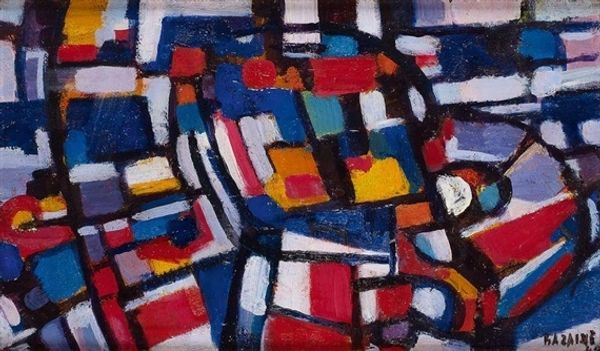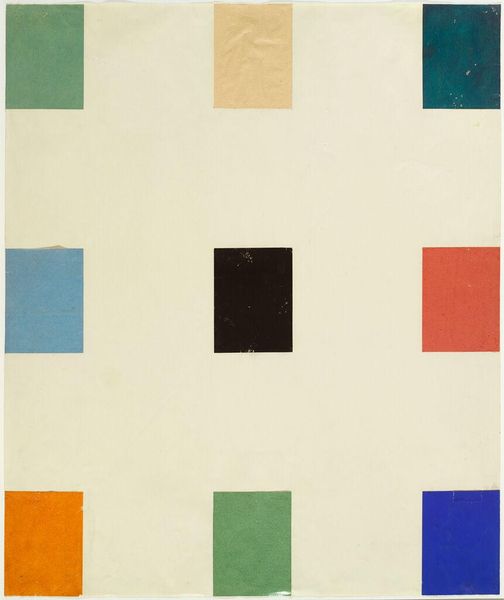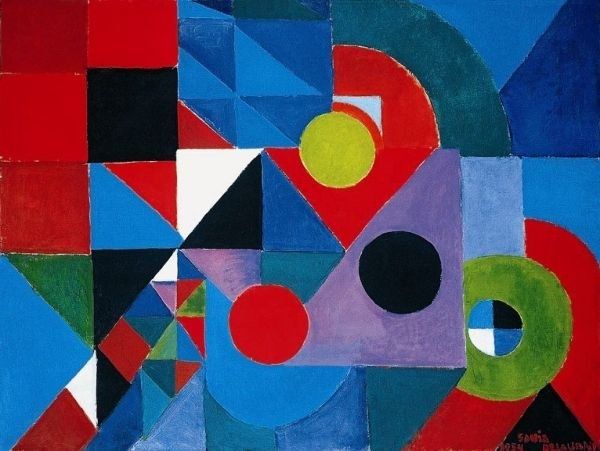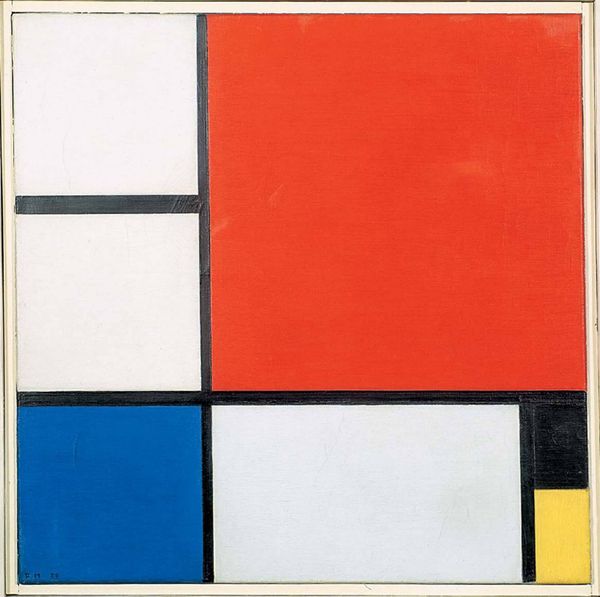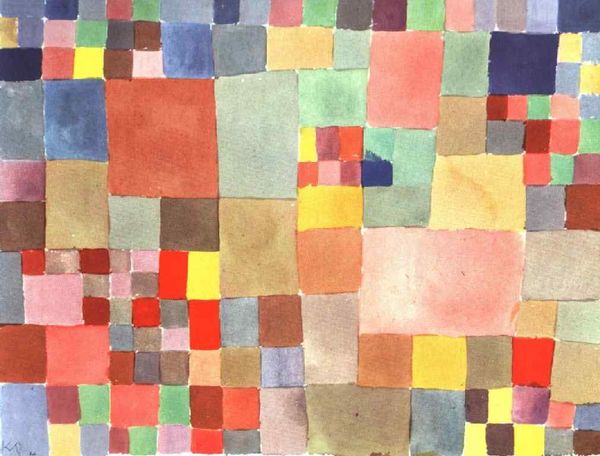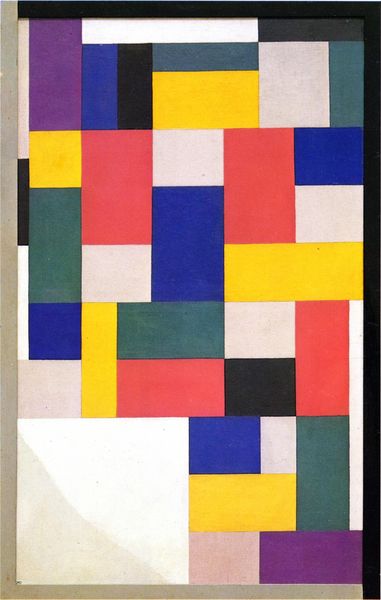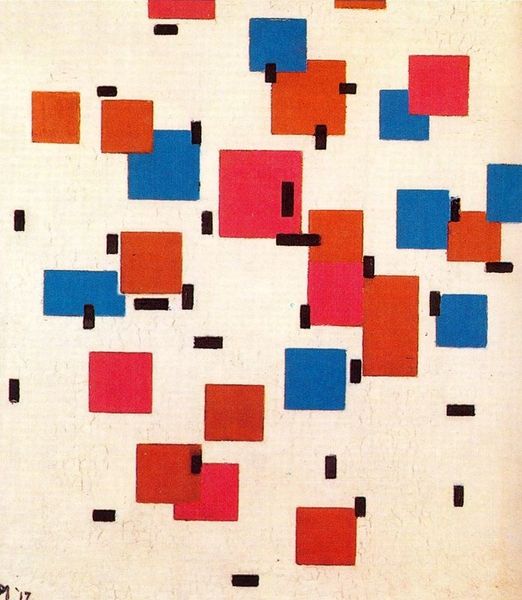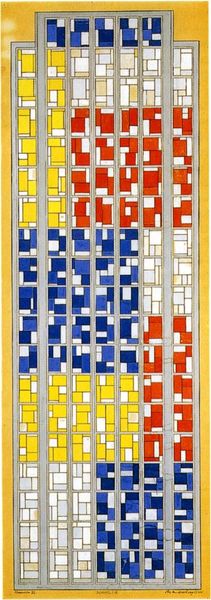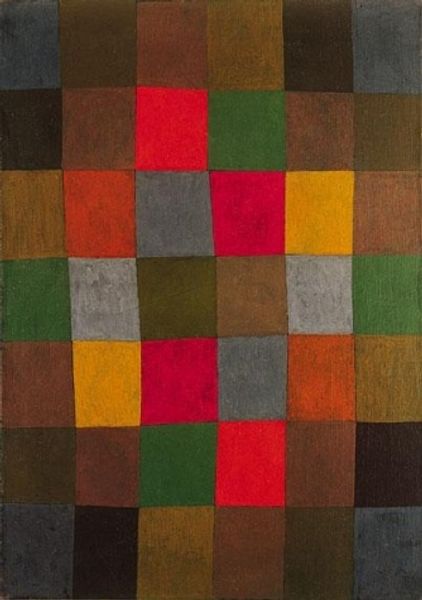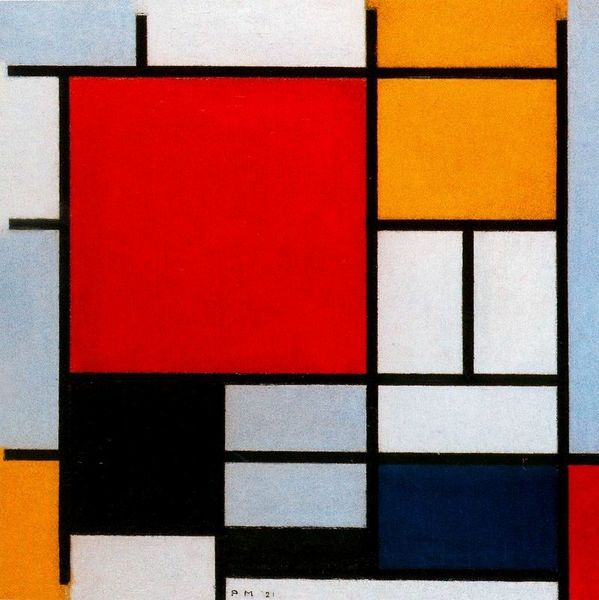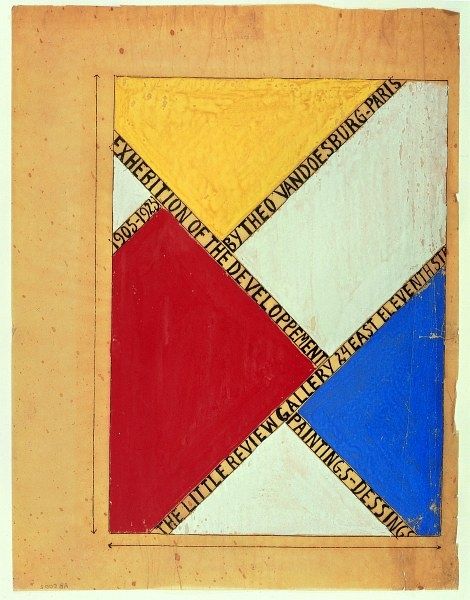
painting, oil-paint
#
de-stijl
#
painting
#
oil-paint
#
pattern
#
form
#
geometric pattern
#
geometric-abstraction
#
abstraction
#
line
#
modernism
Dimensions: 57 x 101 cm
Copyright: Public domain
Curator: Immediately, I see a playful yet grounded composition with an unusual use of a very simple color palette. Editor: Indeed. What we’re looking at here is Theo van Doesburg's "Composition," painted in 1918. Currently, this oil-on-canvas artwork resides at the Solomon R. Guggenheim Museum in New York. Curator: Right, and if we break down the construction, there's a dynamic interplay between the various rectangular shapes, creating tension within its spatial arrangement. The artist restricts the colours to blues, reds, and browns against what appears to be an off-white or light-cream field. Editor: It's crucial to consider van Doesburg's role in the De Stijl movement. The clean lines and geometric forms were heavily influenced by social ideals. The restricted palette, he believed, spoke to a higher truth about functionality. Curator: Absolutely. One cannot help but ponder whether those basic colors, primary in nature, have underlying associations with the time period and culture. Editor: Considering the historical context, we also see the aftermath of the First World War and the push to rebuild Europe by utilizing these simple colors and basic, functionalist forms. In its day, a move toward hopefulness and moving forward. Curator: To me, it's more than mere geometry and tone. There’s something deeply appealing in this painting's asymmetrical design. Editor: That resonates well with the egalitarian ideals prominent during that time. But there were also critics of De Stijl—those who saw its formalism as a retreat from the realities of war and poverty. Curator: Regardless, I remain attracted by its clarity. It offers a tranquil escape with the tension produced from the various shapes and colors used within the space of the artwork. Editor: Yes, whether you view "Composition" as a utopian vision or a product of its historical constraints, it undeniably provokes thoughtful inquiry into the connections among art, culture, and society. Curator: It's clear van Doesburg has expertly managed to portray tranquility by focusing primarily on his understanding of color, shape, and tone. Editor: A testament to how profoundly our historical context influences perception. I appreciate the dialogue we've fostered here today.
Comments
No comments
Be the first to comment and join the conversation on the ultimate creative platform.
